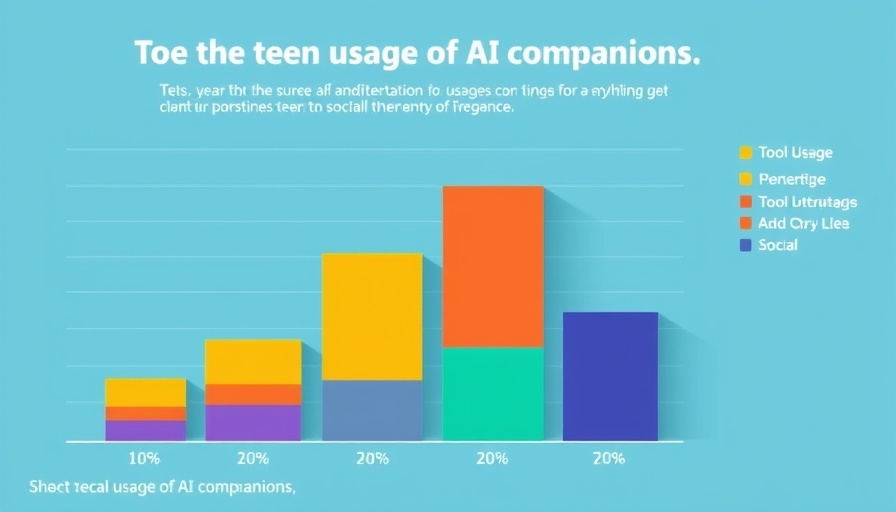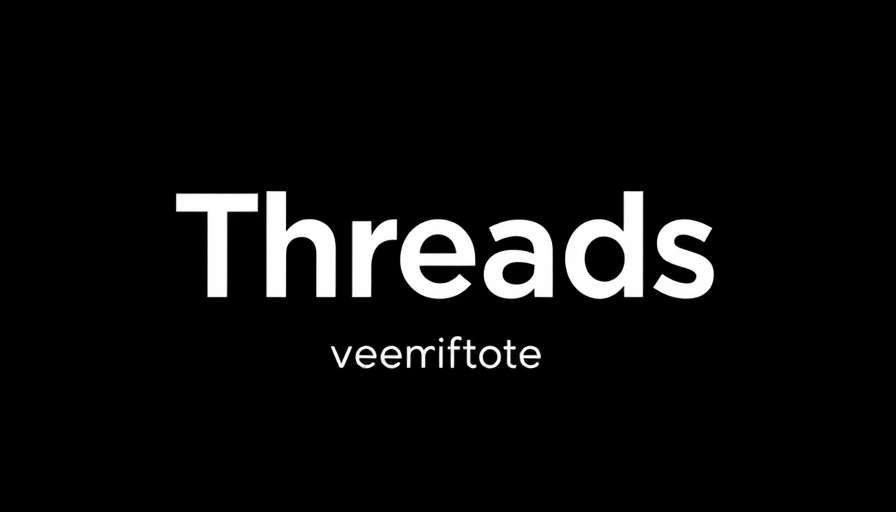
The Rise of AI Companions: A New Era for Teen Interaction
In a world increasingly intertwined with technology, a recent study reveals that a staggering 72% of U.S. teens have turned to AI companions for social interaction. Published by Common Sense Media, this report emphasizes a growing reliance on virtual friends, sparking significant conversation about the implications for the younger generation.
Understanding the Numbers: What the Data Shows
The survey of 1,060 teens provides a snapshot rather than a conclusive overview of AI usage among adolescents. However, with 52% of these respondents admitting to regular interaction with AI bots, there is ample evidence to suggest this trend is not merely fleeting. The study indicates that one in three teens actively engages with AI companions, an alarming statistic that prompts us to reflect on the nature of these interactions.
Building Connections: The Appeal of AI Companionship
Why are teens turning to AI? Many young users find comfort in anonymity and the ability to converse without judgment. As the survey unveils, 18% of users seek emotional support from their digital pals, turning to AI for advice on sensitive topics. The ease of asking difficult questions in a virtual setting offers a welcome respite for those who may feel shy or insecure.
But Are AI Bots a Good Substitute for Human Interaction?
Despite the advantages, the question remains: can AI truly replicate the nuances of human interaction? While the technology is advancing, AI companions are not designed to replace the essence of human connection. They function based on programmed cues and algorithms, leaving them devoid of genuine emotional comprehension and response. As tech companies pour billions into refining these bots, concerns grow about whether virtual relationships could dilute the richness of real human experiences.
What Happens Next? The Future of AI in Teen Lives
As innovations progress, we must ask ourselves, what implications will this have for mental health? Could the increasing dependence on AI companions lead to isolation from real-life friendships or exacerbate feelings of loneliness? If bots become more resilient to hacks and malicious alterations, they might eventually pose as stable emotional outlets. However, potential risks, like disruptions or harmful manipulations, must be addressed to prevent adverse psychological impacts.
Exploring Diverse Perspectives on AI Companionship
Opinions on AI bots' role in the lives of teens vary widely. Some experts emphasize their potential to provide a safe space for self-expression, especially for those grappling with anxiety or social issues. Others express concern that these interactions could create a false sense of security, making it harder for individuals to navigate real-life relationships. This spectrum of perspectives enriches the conversation about the broader relevance of AI in our daily lives.
Counterarguments: Will Teens Lose Touch with Reality?
While some view AI as a boon, others argue it may inadvertently foster a disconnection from reality. As the reliance on bots increases, will the emotional intelligence required for human relationships wane? Research suggests that the art of conversation involves a depth of understanding and empathy that artificial intelligence currently lacks. Thus, prioritizing sound, supportive human relationships remains paramount, as reliance on AI may result in social deficits.
Creating a Balanced Approach: Tips for Teens and Parents
So, how can teens and parents foster a balanced approach to AI usage? Encouraging open discussions about the nature of relationships and the limitations of AI can be pivotal. Setting boundaries around AI interaction, alongside engaging in regular human connections, may ensure that technology enriches rather than overshadows genuine experiences.
The Bottom Line: Embracing Progress with Caution
The increasing engagement of teens with AI companions points toward both opportunities and challenges. Ultimately, shaping how technology is integrated into daily lives depends on purposeful conversations about its role in shaping our social fabric. As we advance toward a future steeped in artificial intelligence, embracing progress while remaining vigilant and cautious will be crucial.
In the quest for connection, it's essential for teens to remember that while AI companionship can complement their lives, genuine human relationships will always hold the irreplaceable value of emotional depth and understanding. So, while your teen may enjoy chatting with their AI, encourage them to put down their devices and engage with the world around them. By balancing both realms, they can navigate this evolving landscape with resilience and wisdom.
 Add Row
Add Row  Add
Add 




Write A Comment